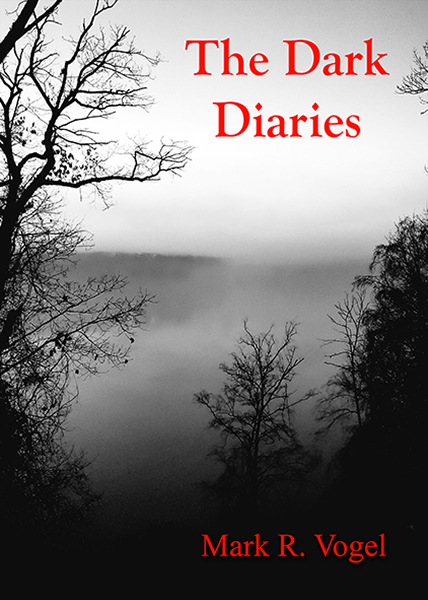The Godfather of Italian horror, Mario Bava, offers his best, most personable tale of terror with his last major work of gothic cinema, Kill, Baby . . . Kill!. Not only does the director cast his atmospheric, surreal nightmare, à la Lewis Carroll’s Alice’s Adventures in Wonderland, in a vein akin to Hollywood’s Golden Era crossbred with a Hammer Production, he created–in a meager two weeks on a budget nearly as sparse–a convoluted Oedipal inversion which undoubtedly served as the outline for Robin Hardy’s narrative of conflicting epistemologies in the classic, The Wicker Man, amid being the inspirational genesis for countless other seminal works within the genre.
Upon the request of the town inspector, Kruger (Piero Lulli), and in lieu of the villagers’ behest that the corpse be left untouched, Doctor Paul Eswai (Giacomo Rossi-Stuart) arrives in a small village and performs an autopsy upon a girl whose final moments were suspicious at best. When Eswai inquires further into the circumstances surrounding the girl’s demise, he is met by fear and verbal atrophy from the townspeople before discovering the local legend of Melissa (Valeria Valeri), the murderous, vengeful ghost of a seven year-old who died during a yearly festival as the entire town’s populace stared on impartially.
Long before M. Night Shyamalan become known for his twist endings, Italian director Mario Bava refined the genre of film by routinely incorporating such plot devises. However, though frequent, such is never arbitrary in the Master of the Macabre’s works. Intriguingly, throughout Kill, Baby . . . Kill! the director inverts much of the traditional symbolism that had come to be associated with cinema’s techniques, beginning with the associative colors of the protagonists and antagonists. By no means a capricious act upon Bava’s behalf, such creates a jarring sense of unease as one’s cinematic equilibrium attempts to right itself while the filmmaker proceeds to tell his reverse Oedipal tale with a cast largely comprised of females (which does not mean to imply that he is subsequently issuing the Greek myth of Electra). As the tale in which a village’s guilt literally haunts itself amid a literally and metaphorically crumbling, dilapidated mansion and its inhabitant, which oversees the village and represents the moral character and mindset of the inhabitants below, we are witness to a conflict of epistemological platforms as scientific rationale attempts to reconcile its methods in the dominating presence of local folklore and legend. Like a true storyteller, Bava denies the temptation to allow style to precede the story as the audience is continually challenged. For example, Martha (Franca Dominici), the mother of a now cursed and ailing child named Nadienne (Micaela Esdra), informs Eswai that his methods are absurd upon the latter’s diagnosis. When the child passes, Bava quickly provides evidence in favor of the doctor’s perspective yet never hints nor prematurely allows for the identity of the viable party to be revealed before its proper time, the revelation of which promising to avail which ideology to be ultimately correct. Ingeniously, when such time does arrive, the cinematic epiphany does not appear as a ready solution for the culpability remains arguable long after the final frame as Bava leaves the viewer to reflect upon what came before.
Yet for all of its craft and substantive girth, Kill, Baby . . . Kill! is perhaps more remarkable in the influence it has wrought, not only with the realm of horror, but throughout cinema. After taking from Tod Browning’s Dracula with its opening (reminiscent of Renfield’s entrance into the village of superstitious townsfolk prior to his departure to Castle Dracula), Bava’s work segues into what would later be known as the visual signature of Nicolas Roeg’s Don’t Look Now. The feature continues to give as much as it takes for, after an homage to Alfred Hitchcock’s Vertigo and John Llewellyn Moxey’s equally admirable City of the Dead, the filmmaker proceeds to not only provide the narrative framework for Robin Hardy’s The Wicker Man, but also serves the inspiration for his Italian counterpart, Dario Argento, as witnessed in the latter’s masterpiece, Suspiria, via the diverse cataloguing of various female personalities (in a field fraught with the typecast image of hapless and helpless female victims). The now-famed horror iconography of Lucio Fulci’s ominous necrosapien, who is seen peering through a window (to say nothing of Guillermo Del Toro’s repeated instances of such), and Peter Medak’s disconcerting image of a singular bouncing ball finds their genesis in Bava’s work. Even such auteurs as David Lynch, with his sequence in Twin Peaks where a character chases himself in a loop to ultimately catch up with himself (Bava includes a gallery lined with candelabras eerily fashioned as jutting arms which, if excerpted, would undeniably be labeled the labor of Lynch by the novice viewer), and John Carpenter, owes much to Kill, Baby . . . Kill!, for Bava’s feature gives as much to the latter American’s overlooked masterpiece, In the Mouth of Madness, as does H.P. Lovecraft. Barring the coincidental surname of the central characters, even Wes Craven’s A Nightmare on Elm Street, much like Argento, liberally borrows Bava’s trademark use of neon lime green as an ominous foreshadowing hue.
As daunting and historically intimidating as Kill, Baby . . . Kill! may be, it is not without its flaws. The acting, especially at its commencement, misses upon occasion, yet never seriously detracts from the proceedings in which plot and atmosphere are the true stars. However, Bava does consent to plot exposition at the film’s conclusion by way of a character mouthpiece yet, given the limited time and funding, particularly when placed alongside the film’s overall prowess, can be readily forgiven as well.
Mario Bava’s Kill, Baby . . . Kill! is refutably the director’s penultimate effort after Black Sunday. The filmmaker’s steadfast ability to issue a thought-provoking examination upon cultural relativism amid granting his audience an engaging, metaphorically-potent and visually stunning depiction of the environment surrounding such a conflict, solidifies his all-too-deserving status as the Godfather of Italian horror as he continues to be criminally overlooked by the mainstream scholars while exacting a continuing influence over the whole of film. In short, Bava’s masterpiece serves as a wake-up call to academia for the latter nevertheless failed to humble itself (to say nothing of enacting rectification) at its critical omission even after one of their own, Martin Scorsese, paid homage to the prowess of the Italian master by penning the introduction to Tim Lucas’s study of the director, All the Colors of the Dark.
-Egregious Gurnow
- Interview with J.R. Bookwalter - January 22, 2015
- Interview with Andrew J. Rausch - January 22, 2015
- Interview with Rick Popko and Dan West - January 22, 2015
- Interview with Director Stevan Mena (Malevolence) - January 22, 2015
- Interview with Screenwriter Jeffery Reddick (Day of the Dead 2007) - January 22, 2015
- Teleconference interview with Mick Garris (Masters of Horror) - January 22, 2015
- A Day at the Morgue with Corri English (Unrest) - January 22, 2015
- Interview with Writer/Director Nacho Cerda (The Abandoned, Aftermath) - January 22, 2015
- Interview with Actress Thora Birch (Dark Corners, The Hole, American Beauty) - January 22, 2015
- Interview with Actor Jason Behr, Plus Skinwalkers Press Coverage - January 22, 2015


